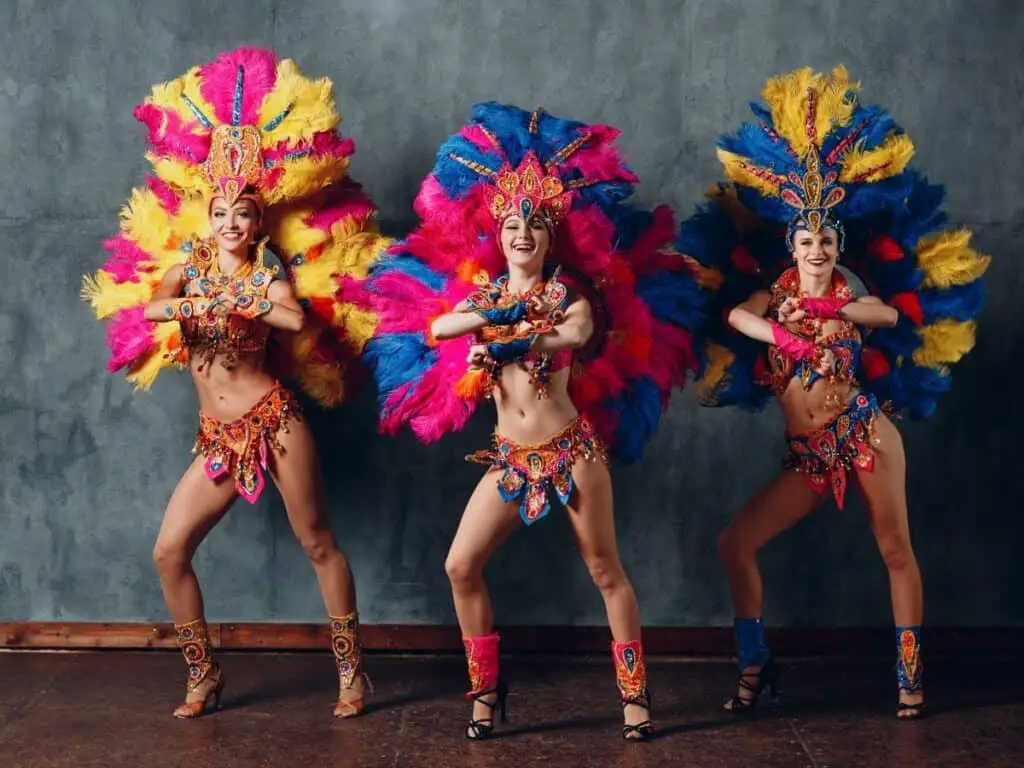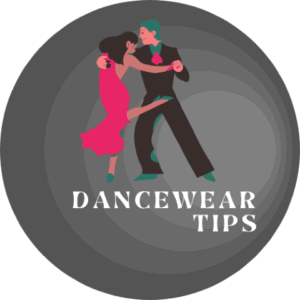
Salsa and Samba are both Latin dance styles but differ in so many ways. Salsa and Samba are the two most popular dance styles in the World. And very often, these two dance styles tend to get mixed up, so I will shed some light by explaining the main differences between Salsa and Samba.
What is the difference between Salsa and Samba? Salsa originates from the Caribbean; whereas, Samba originates from Brazil. The main differences are in step counts, music, and overall presentation. Salsa is danced to the beats 1-2-3 and pause and 5-6-7 and pause. However, Samba is danced on the beats 1-2, 3-4, 5-6, 7-8.
Salsa is mainly partner dance, whereas Samba can be danced alone or with a group of people. Salsa has specific steps, which is the main characteristic of this dance style, but Samba is more free-flowing.
Both dances have their music, so it would be hard to dance Salsa to Samba music and vise versa.
What Is Samba Dance?
Samba originates from Rio De Janeiro, Brazil, and it became very popular in the United States and Europe in the 1940s. Samba is characterized by simple forward and backward steps and tilting, rocking body movements. It is danced to music in 4/4 time with a syncopated rhythm.
Samba is a fun, upbeat, and energetic dance style that is danced counterclockwise around the dance floor. Samba involves lots of hip movements, and a great deal of rhythm is expressed throughout the torso.
Samba is celebrated every year in Brazil during Carnival, where thousands of costumed revelers parade in the streets dancing, singing, and drumming. Carnival Samba is not a partner dance, as opposed to the Latin Ballroom Samba.
The solo Samba style is called “samba no pe”. When dancing solo style, three steps are taken in every measure of the 2/4 music.
Partner Samba existed even before it hit the Latin Ballroom, and it was called the “Samba de gafieria.” Partner Samba evolved with time.
The modern Samba Latin ballroom style looks like traditional Samba, but many locals in Rio de Janeiro would not call it Samba.
Solo and partner Samba is danced on a quick beat with fast footwork. The Latin Ballroom Samba did not originate in Brazil but is inspired by Brazilian Samba and is influenced by Samba music and dance movements.
Samba has become so popular in the United States that many Zumba instructors have incorporated some elements of the Samba dance into their workout programs.
Samba music and dance is considered as most lively, energetic, and fun and is celebrated Worldwide.
Here is an example of Samba dance steps for beginners presented by “Passion for Dancing”:
Is It Hard To Learn Samba Dance?
Samba is one of the most challenging dances out there because of the timing. There are so many rhythms and timings that could be used in Samba. The most simple timing in Samba dance is called “bounce timing,” which is used in most beginner steps.
Samba is such a complex dance because most people have a hard time incorporating timing and body fluidity. You need to move your body properly and right beat value to the music. It takes a lot of practice, but it is possible to align timing and body fluidity so your Samba moves look stunning on the dance floor.
How To Count Samba?
Bounce timing is when you count in the counts of 8, counting as 1-2, 3-4, 5-6, 7-8. This is the basic rhythm.
You must be thinking now what does this means. This means that the beat value, which is 1-2, is actually 3/4, 1/4, and 1 in terms of the beat value of each step. So basically, when you are counting 1-2, you are actually counting three steps.
Make sure that you are feeling out the music appropriately to the beat value that’s there.
Here is an example of Samba music so you can practice finding the beat.
What Is Salsa Dance?
Salsa is an energetic, fun, and sensual partner dance. Although it is a partner dance, it is a very sociable type of dance, so you don’t need to have a consistent partner to dance Salsa. It has become increasingly popular worldwide, and Salsa clubs can be easily found in almost every city.
Many salsa lovers are opening doors to new opportunities for social life.
Salsa is a Latin dance that originated in the 1960s and combines Cuban, Dominican, and Puerto Rican dances. It was mainly developed by Dominicans and Puerto Ricans in New York between the ’60s and ’70s.
In salsa dancing, a dancer shifts their weight by moving into the middle to have 50/50 weight. The upper body remains almost unaffected by those changes. The main movements are in eight steps that cause hips to move and adding more sensuality.
The arms are used by “lead” to indicate to “follow” to which direction she should go. It could be either an open or closed position. The open position requires the dancers to hold one or both hands. This is especially very important for moves that involve turns, putting arms behind the back, or moving around each other.
In the closed position, the lead puts the right hand on the “follow’s” back, where the “follow” puts the left hand on the leader’s shoulder.
Salsa tempo is between 150 bpm to 250 bpm; therefore, the pace is very fast. Salsa composition is based around clave rhythm that has four types. The key instrument that gives the core groove to salsa music is the clave. Salsa songs are played with two wooden sticks called claves that are hit together.
A great thing about Salsa dance is that it will continue to change and grow as people add new techniques, steps, and individual styles that others will love, too.
Here is an excellent example of Salsa dance for beginners:
Final Words
As I have covered in this article, Salsa and Samba are very different dance styles. They both are very popular Worldwide, energetic, and fun. However, the music, dance style, and dance steps are entirely different. Although Salsa and Samba are so different, they are very rewarding to know how to dance.

